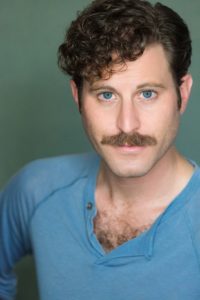
Some people might call Steve Hackman a rulebreaker, a rogue in the world of classical music. But the composer known best for his “mash-up” arrangements — think Brahms meets Radiohead, Bjork versus Bartok, Beethoven and Coldplay — is really doing just the opposite, tapping into a deep-rooted creative energy that composers through the centuries have used to produce some of the most iconic music in the world.
“In the classical world, we’re behind regarding our techniques,” Hackman says. “We tend to be a little closed-minded regarding borrowing techniques from other genres of music, even though other composers have been doing this for centuries.”
Take Johannes Brahms, for example. The German composer took Hungarian folk music and arranged it for symphonic orchestra, made variations on some of Joseph Hayden’s works and wove drinking songs into his orchestral overtures.
Then there’s Kanye West, who’s famously taken works by Ray Charles and Daft Punk and created chart topping hip-hop songs.
Argue all you like, but Hackman will tell you it’s all a part of the creative game.
This month Hackman will premiere his fourth mash-up concert at the Colorado Music Festival’s Happy Hour series (formerly called the Mash-Up series) at Chautauqua Auditorium.
To date, Hackman’s written six full-scale orchestral mash-up shows that pair one pop artist with one classical composer. So his goal for this year’s Colorado Music Festival (CMF) show was to go bigger. More variety. More artists. More music.
“The way that I sort of devised to accomplish this was to create an imaginary music festival where we were not limited by time, in essence, so that Mozart, Beethoven and Müller could be in the same place as John Mayer, Adele and Chance the Rapper,” Hackman says. “This would be the music festival of my dreams. Not only are all the performers and composers performing along with one another, they are collaborating, hanging out back stage, partying after the show together. When I started writing it with this idea in mind, through people in this fantasy world together, this situation started to write itself.”
The result is Classicalapalooza, featuring 20 different artists from the contemporary and classical genres, where Lady Gaga’s work meets Brahms, and Chance the Rapper’s lyrics find cadence over Shostakovich.

Hackman has added a narrator to the mix as well — his friend Andrew Carter — to lead audience members through layers of meaning and intersections, to provide context to the mash-up.
“Because instead of just looking for whether it’s melody, structure, form or rhythm that the songs have in common, we have a narrator that’s able to explain the concept of Shostakovich’s Fifth Symphony (written during the height of the Stalinist purges of 1937) but also that Chance the Rapper is from the war-torn streets of Chicago, an underserved population forgotten by the government and city,” Hackman explains.
Classicalapalooza is a show within a show, created simply by Hackman asking, “What would Wagner do after hearing this Adele song?”
“Wagner having written some of the most epic vocal music the world has ever seen, and Adele having one of greatest voices in the pop realm, it’s fun to imagine these two sharing their music,” Hackman says. “Imagining how Wagner would react to hearing Adele, what he would insert in, how they would pick ideas for how they would work together, what Adele would do in response.”
There will also be some mix-ups between contemporary artists: Twenty One Pilots and Bruno Mars, and Kayne West and Daft Punk. These mixes just emerged naturally, Hackman says, and provide comfortable transitions in the show.
As with his previous CMF shows, Hackman will only have one two-and-a-half-hour rehearsal with the entire CMF orchestra before playing Classicalapalooza live.
As Hackman’s career is really beginning to take off — he’ll be debuting with the Boston Pops this year — he finds himself back with the orchestra that “took a chance on him” years ago when he was just getting started as a composer.
“With any relationship with an orchestra, it builds over time — especially with somebody that has a technique like I’ve got, it does take time. It can be very startling at first,” Hackman says. “It’s going to be a pleasure to get back with this orchestra after a couple of years.”














